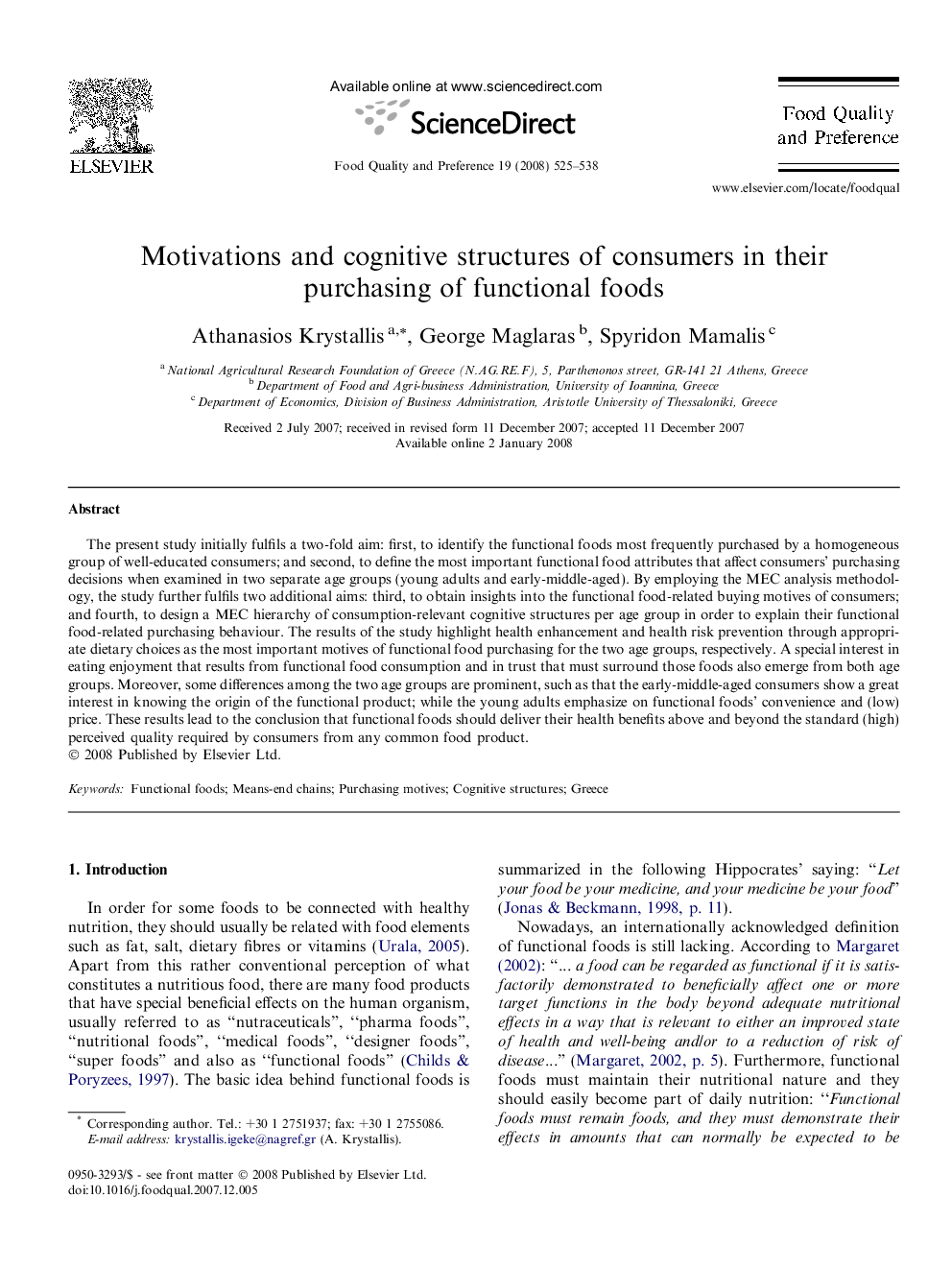| Article ID | Journal | Published Year | Pages | File Type |
|---|---|---|---|---|
| 4317975 | Food Quality and Preference | 2008 | 14 Pages |
The present study initially fulfils a two-fold aim: first, to identify the functional foods most frequently purchased by a homogeneous group of well-educated consumers; and second, to define the most important functional food attributes that affect consumers’ purchasing decisions when examined in two separate age groups (young adults and early-middle-aged). By employing the MEC analysis methodology, the study further fulfils two additional aims: third, to obtain insights into the functional food-related buying motives of consumers; and fourth, to design a MEC hierarchy of consumption-relevant cognitive structures per age group in order to explain their functional food-related purchasing behaviour. The results of the study highlight health enhancement and health risk prevention through appropriate dietary choices as the most important motives of functional food purchasing for the two age groups, respectively. A special interest in eating enjoyment that results from functional food consumption and in trust that must surround those foods also emerge from both age groups. Moreover, some differences among the two age groups are prominent, such as that the early-middle-aged consumers show a great interest in knowing the origin of the functional product; while the young adults emphasize on functional foods’ convenience and (low) price. These results lead to the conclusion that functional foods should deliver their health benefits above and beyond the standard (high) perceived quality required by consumers from any common food product.
